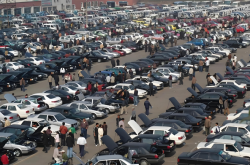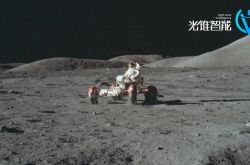The Real Story of Autonomous Driving Robotaxis on Shanghai's Roads: Daily Earnings Fall Short of Electricity Costs, Taxi Drivers Find Humor in the Situation—Not Competitors, but Partners!
![]() 10/09 2025
10/09 2025
![]() 539
539
Introduction: As a Pony.ai Robotaxi, devoid of a steering wheel or safety officer, makes a slow arrival at a designated stop in Jinqiao, Pudong, a passing taxi driver lowers his window and fixes his gaze on this 'metal box' for a full thirty seconds. This summer, a subtle transportation revolution is quietly unfolding on Shanghai's streets: Baidu's Luobo Kuaipao navigates through Jinqiao, Zhiji's autonomous vehicles cruise around the lake in Lingang, and driverless cars, a result of a partnership between Dazhong Transportation and Baidu, have even ventured into the Huamu Subdistrict. This development has sparked widespread concern among taxi drivers: With Pony.ai announcing a 70% reduction in the cost of autonomous driving kits and Shanghai planning to open 5,000 kilometers of roads for autonomous driving by 2027, are these steel 'drivers' truly coming to usurp their livelihoods? In reality, from operational data and partnership models to industry prospects, the advent of Robotaxi appears more as an 'additive revolution'—it's not here to supplant humans but to collaborate with the traditional transportation sector to reshape the landscape of intelligent mobility. Driverless Cars Are Here (WeChat Official Account: Driverless Cars Are Here) delves into this topic with everyone!
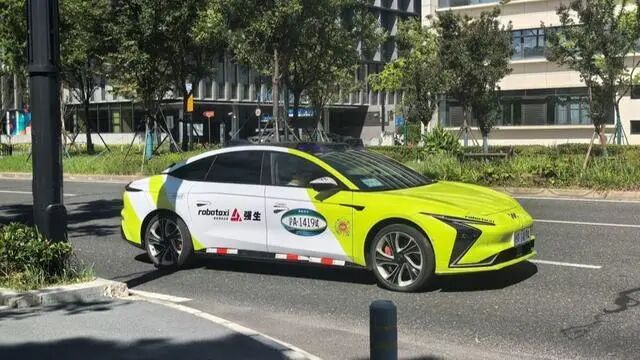
I. Costs Down, But Scale Limited: Current Robotaxi Still in the 'Trial Phase'
Many fear that Robotaxi will swiftly replace taxis, primarily due to the combined impact of 'technological maturity + cost reduction.'
However, real-world data indicates that current driverless taxis are far from achieving 'large-scale replacement' and remain in the 'trial phase' of technological verification and model exploration.
Cost reduction is an undeniable reality.
Once, an L4 autonomous driving kit cost hundreds of thousands of yuan, with a single lidar unit exceeding $10,000, rendering Robotaxi a 'costly indulgence.'
Today, technological advancements have dramatically altered the cost landscape:
Pony.ai has slashed the cost of autonomous driving kits by 70% across three mass-produced models, while Baidu's sixth-generation Robotaxi has reduced its Bill of Materials (BOM) cost to 204,600 yuan, with lidar prices plummeting to the $200 range.
This cost reduction is directly mirrored in pricing. Pony.ai's Robotaxi, in collaboration with Jinjiang Taxi, charges 14 yuan for the first 3 kilometers and 2.7 yuan per kilometer thereafter, matching Shanghai's regular taxi fares;
In a real-world test spanning 7.8 kilometers, Baidu's Luobo Kuaipao incurred a cost of approximately 28 yuan, virtually indistinguishable from traditional rides.
Yet, price parity does not equate to competitive equality, as the gap in operational scale remains 'enormous.'
Currently, Baidu Zhixing operates a mere 5 'Luobo Kuaipao' vehicles in Jinqiao, while Zhiji has a fleet of just 10 in Lingang. These vehicles travel over 60 kilometers daily, whereas a seasoned taxi driver can easily cover more than 300 kilometers per day.
Even across Shanghai, the total number of deployed Robotaxi vehicles numbers only in the hundreds, compared to over 100,000 taxis and ride-hailing cars in the city.
The disparity is even more pronounced in order volume: Shanghai's Robotaxi vehicles average just over ten orders per day per vehicle, with over 60% concentrated among young people aged 20-35, failing to penetrate mainstream transportation scenarios.
The inability to scale up stems from dual constraints of policy and technology.
The chief engineer of Zhiji's L4 project revealed that each Robotaxi must undergo 'multi-layered evaluations' by various departments under a 'one-vehicle, one-license' system, resulting in lengthy approval cycles for new vehicles.
While Pony.ai's 5 vehicles in Jinqiao can respond to orders within approximately 10 minutes, expanding beyond Huamu necessitates increasing the fleet size first to maintain operational efficiency.
The industry consensus is that a fleet of at least 100 vehicles is required for companies to explore per-vehicle revenue balance, a threshold no Shanghai enterprise has yet reached.
II. Not Rivals, but Allies: The 'Tech + Operations' Partnership Model
If limited scale is Robotaxi's 'inherent weakness,' Shanghai's 'tech enterprise + traditional taxi' partnership model has dismantled the 'zero-sum game' narrative, fostering a complementary and win-win ecosystem between autonomous driving and traditional industries.
The core logic of this model is to allow tech companies to focus on algorithms while taxi enterprises leverage their experience.
The demonstration operation licenses issued by Shanghai in 2025 explicitly mandate autonomous driving companies to form cooperative entities with traditional taxi firms, leading to three key partnerships: 'Pony.ai + Jinjiang Taxi,' 'Baidu Zhixing + Dazhong Transportation,' and 'Zhiji + Qiangsheng.'
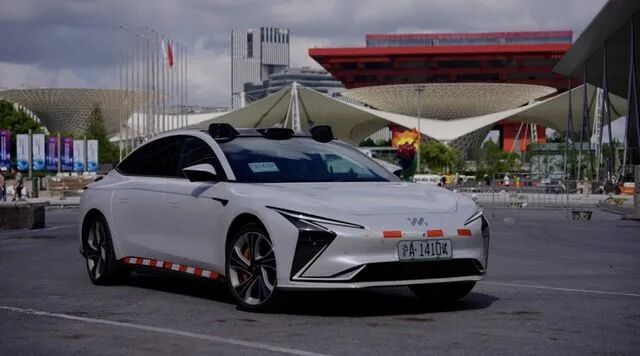
For tech companies, this resolves the 'last-mile' challenge of operational deployment:
Companies like Qiangsheng and Jinjiang possess decades of experience in Shanghai, knowing where ride demand is highest, how to dispatch vehicles most efficiently, and even offering 'manual backup' services—when a Robotaxi arrives at a stop but passengers fail to board promptly, the operator proactively calls to remind them, pairing 'driverless' with 'human service.'
For traditional taxi companies, this opens a 'second growth curve.'
Facing declining ride volumes and driver attrition due to ride-hailing competition, Robotaxi integration allows them to enter the new tech sector.
Dazhong Transportation staff noted that after partnering with Baidu, their app added a 'Smart Ride' entrance, attracting 15% new users within a month, many of whom were young people who previously only used ride-hailing apps.
More importantly, this collaboration doesn't require taxi companies to invest heavily in R&D; they simply need to contribute operational capabilities to share in the intelligent mobility dividends, offering a 'lightweight model' for traditional enterprises to digitally transform.
This 'partnership' model has already demonstrated synergies.
By September 2025, over 70% of Shanghai's Robotaxi service orders were accessed through traditional taxi platforms.
One driver calculated: 'Robotaxi mainly handles fixed routes during rush hours, taking orders from office buildings that we used to struggle for, while leaving short-distance rides around residential areas for us. The complementarity is strong.'
Data supports this: In Pudong, where Robotaxi operations are dense, traditional taxis' idle rates not only failed to rise but actually dropped by 3 percentage points, as intelligent dispatch systems reduced drivers' blind mileage in searching for passengers.
III. The Future of Drivers: From Behind the Wheel to Behind the Screen
At Yangshan Port, autonomous driving container trucks offer a glimpse:
A logistics system once requiring 3,000 truck drivers working in three shifts now needs only 500 remote monitors.
Most of these monitors are reassigned drivers who, after three months of training, can simultaneously oversee five vehicles.
The taxi industry may follow a similar trajectory:
Experienced drivers transition into operational consultants, training AI to handle complex road conditions;
Middle-aged drivers shift to remote support, handling emergencies;
Younger drivers learn fleet management, moving into technical roles.
Beyond the 'job displacement' fog, the core value of Robotaxi has never been to replace human drivers but to fill gaps in traditional transportation models, leveraging its strengths in scenarios where humans struggle to operate efficiently.
An autonomous driving company is developing an 'AI Coaching System,' inviting 20-year veteran drivers to 'teach' algorithms:
How to identify potential risks when elderly pedestrians shuffle across the street, how to predict children's running trajectories near school gates.
This experience is being translated into code, enhancing AI's driving capabilities in return.
IV. A Bigger Battleground: Robotaxi as the Vanguard of Intelligent Transportation
What truly matters is the data:
Zhiji's 58 pick-up/drop-off stations in Lingang generate 5,000 daily boarding events;
Baidu's roadside sensors in Jinqiao have accumulated 100,000 intersection decision-making cases;
Pony.ai's dispatch system is learning to predict regional travel demand.
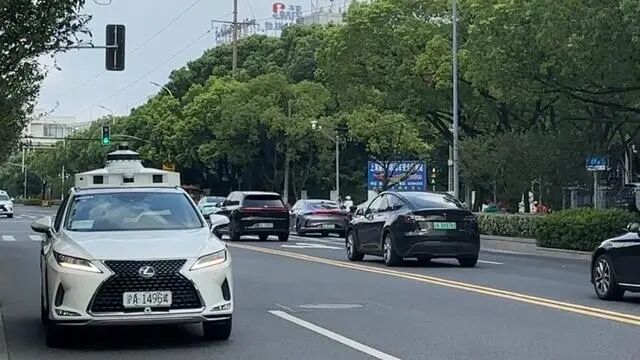
This data will ultimately serve a grander goal—the smart city transportation brain.
When Robotaxi fleets reach a thousand vehicles, the real-time traffic data they generate may surpass operational revenue in value.
In conclusion, Driverless Cars Are Here (WeChat Official Account: Driverless Cars Are Here) believes:
The ultimate purpose of technology has never been to replace humans but to enable them to focus on more empathetic, creative work.
These driverless taxis on Shanghai's streets are not here to take jobs but to work alongside human drivers to improve 'transportation' itself.
#DriverlessCarsAreHere #Driverless #AutonomousDriving #SelfDrivingCars #Shanghai


